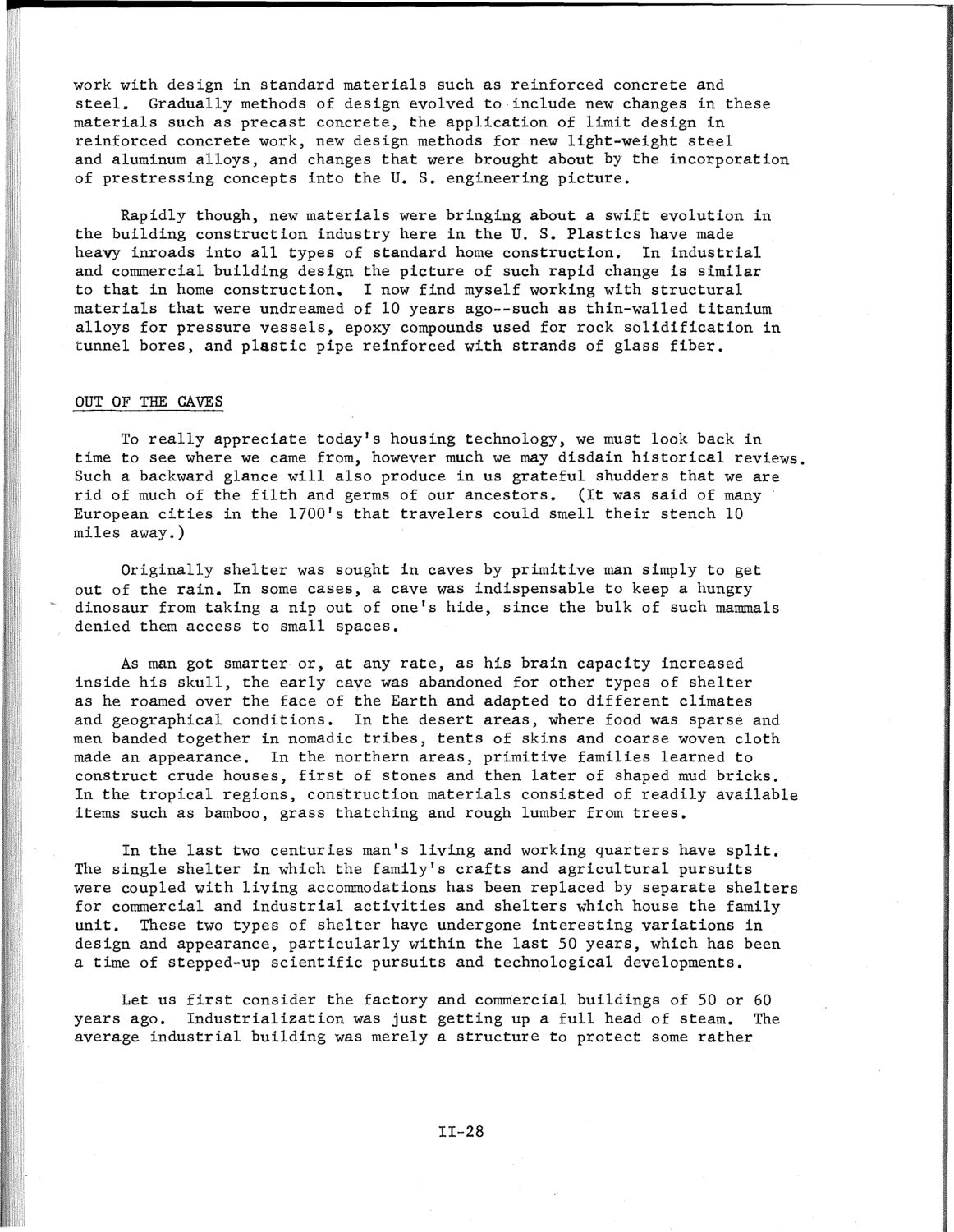| |
| |
Caption: SWE - Proceedings of the First International Conference of Women Engineers and Scientists
This is a reduced-resolution page image for fast online browsing.

EXTRACTED TEXT FROM PAGE:
work with design in standard materials such as reinforced concrete and steel. Gradually methods of design evolved to include new changes in these materials such as precast concrete, the application of limit design in reinforced concrete work, new design methods for new light-weight steel and aluminum alloys, and changes that were brought about by the incorporation of prestressing concepts into the U. S. engineering picture. Rapidly though, new materials were bringing about a swift evolution in the building construction industry here in the U. S. Plastics have made heavy inroads into all types of standard home construction. In industrial and commercial building design the picture of such rapid change is similar to that in home construction. I now find myself working with structural materials that were undreamed of 10 years ago--such as thin-walled titanium alloys for pressure vessels, epoxy compounds used for rock solidification in tunnel bores, and plastic pipe reinforced with strands of glass fiber. OUT OF THE CAVES To really appreciate today's housing technology, we must look back in time to see where we came from, however much we may disdain historical reviews. Such a backward glance will also produce in us grateful shudders that we are rid of much of the filth and germs of our ancestors. (It was said of many European cities in the 1700's that travelers could smell their stench 10 miles away.) Originally shelter was sought in caves by primitive man simply to get out of the rain. In some cases, a cave was indispensable to keep a hungry dinosaur from taking a nip out of one's hide, since the bulk of such mammals denied them access to small spaces. As man got smarter or, at any rate, as his brain capacity increased inside his skull, the early cave was abandoned for other types of shelter as he roamed over the face of the Earth and adapted to different climates and geographical conditions. In the desert areas, where food was sparse and men banded together in nomadic tribes, tents of skins and coarse woven cloth made an appearance. In the northern areas, primitive families learned to construct crude houses, first of stones and then later of shaped mud bricks. In the tropical regions, construction materials consisted of readily available items such as bamboo, grass thatching and rough lumber from trees. In the last two centuries man's living and working quarters have split. The single shelter in which the family's crafts and agricultural pursuits were coupled with living accommodations has been replaced by separate shelters for commercial and industrial activities and shelters which house the family unit. These two types of shelter have undergone interesting variations in design and appearance, particularly within the last 50 years, which has been a time of stepped-up scientific pursuits and technological developments. Let us first consider the factory and commercial buildings of 50 or 60 years ago. Industrialization was just getting up a full head of steam. The average industrial building was merely a structure to protect some rather 11-28
| |